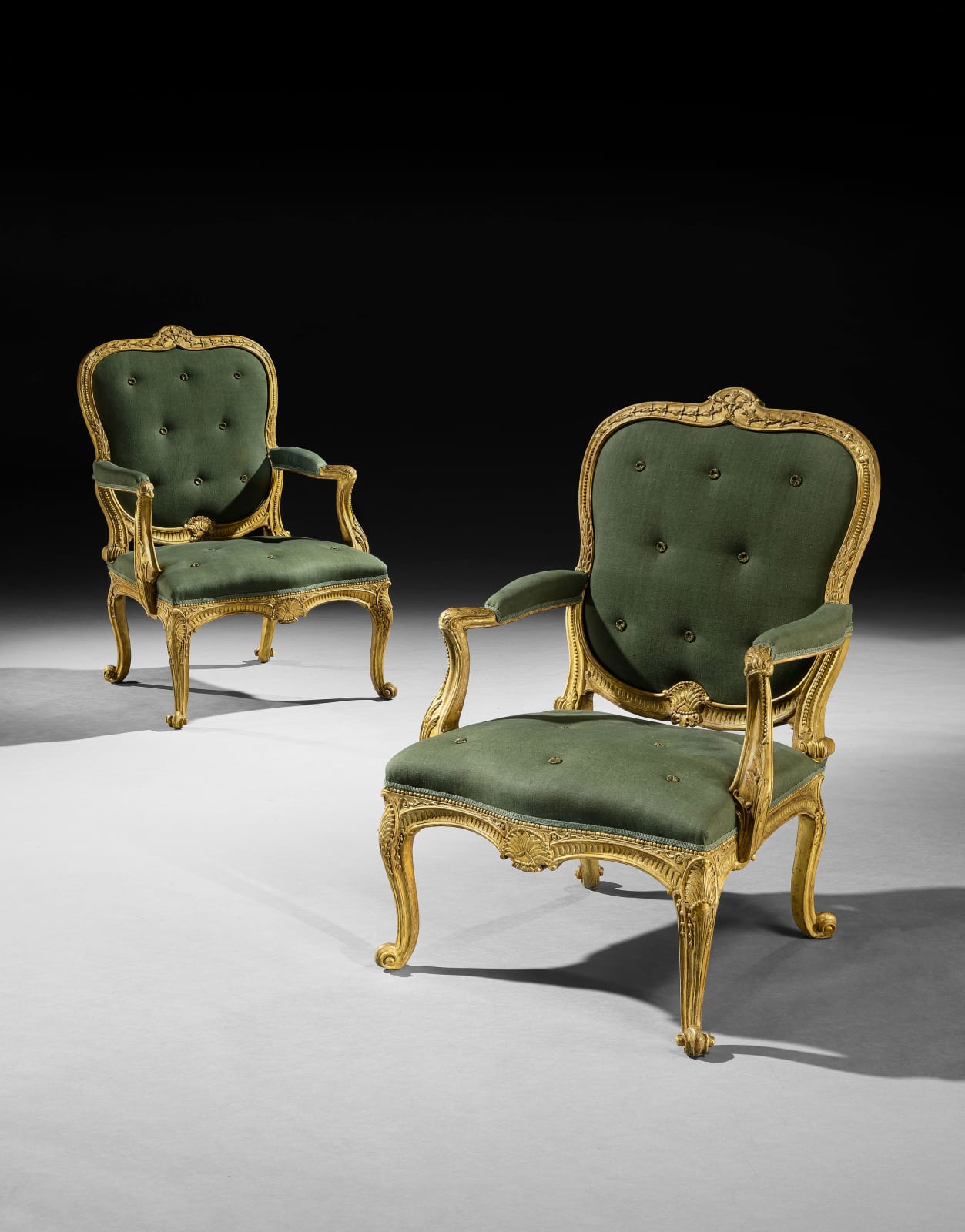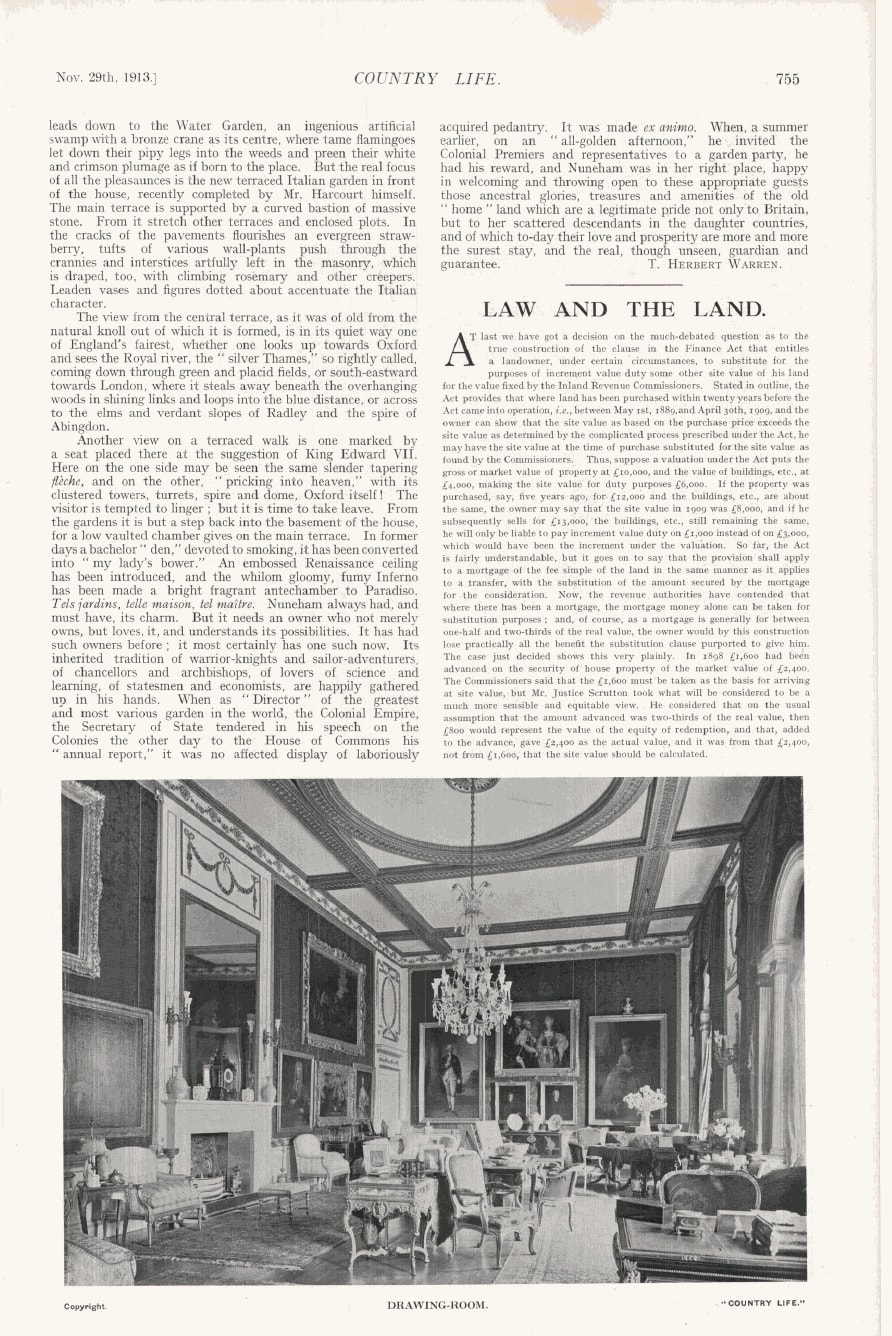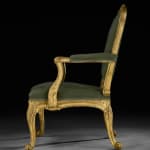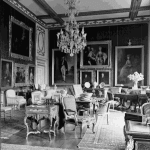The Nuneham park chairs, designed by James ‘Athenian’ Stuart and attributed to John Gordon
Width: 27 ¾ ” 70.5cm
Depth 28 ¼ ” 71.5cm
Further images
Provenance
Supplied by James Stuart to Simon Harcourt, 1st Earl Harcourt (1714-77) for Nuneham Park, Oxfordshire, England
By descent, Harcourt family at Nuneham to William Edward Harcourt, 2nd Viscount Harcourt (1908-1979), by whom sold, E. J. Brooks & Son, 1-2 December 1948
Acquired by Edwin H. Herzog, New York and Charleston, South Carolina, USA
Charleston Museum, South Carolina. USA.
Exhibitions
T. Herbert Warren, ‘Nuneham Courtenay, Oxfordshire’, Country Life (29th November 1913), pp. 746–55 (p. 755) See images
Frank Davis, ‘Glorious Vane’, Country Life (13 January 1983), p. 62, fig. 2
Pelham Galleries, The Grosvenor House Art and Antiques Fair, Cat. (1996), p. 108
Literature
A. Coleridge, ‘Chippendale, The Director and some Cabinet-makers at Blair,’ Connoisseur, Dec. 1960, pp. 252-6
P. Thornton and J. Hardy, ‘The Spencer Furniture at Althorp - II’, Apollo (June 1968), pp. 440-451 (p. 448)
G. Worsley, ‘Nuneham Park Revisited – I & II’, Country Life (3 & 10 January 1985), pp. 16-19; pp. 64-67
Weber Soros, S. (ed.), James ‘Athenian’ Stuart: The Rediscovery of Antiquity (New Haven and London, 2006), pp.
The Nuneham park chairs, designed by James ‘Athenian’ Stuart and attributed to John Gordon
English: circa, 1760-64
Significance and Survival:
This is the only pair of chairs from either the Nuneham Park or Spencer House suites to retain their original oil gilding. This combined with their provenance, and execution make them one of the most significant and important surviving chair commissions of the 18th Century, and an example that stands alone.
An Early Expression of English Neoclassicism
Design and Stylistic Context
This pair of giltwood armchairs from Nuneham Park were designed by James “Athenian” Stuart and are attributed to the workshop of John Gordon. They are exceptional expressions of the early English neoclassical style of the 1760s, a moment when British taste was shifting decisively away from the exuberant asymmetry of Rococo towards the ordered harmony of the classical world, inspired by archaeological discoveries at Herculaneum and Pompeii and by measured studies of ancient Greek and Roman architecture.
James Stuart, having returned from his pioneering survey of Greek antiquities and the publication of The Antiquities of Athens (1762), was one of the chief exponents of this new aesthetic. His designs emphasised balance, symmetry, and an authentic vocabulary of classical ornament, laurel leaves, husk garlands, palmettes, and guilloches were adapted to the lighter proportions and refined profiles of contemporary furniture. In his interiors, furniture was conceived as an integral component of the architectural scheme, harmonising with doorcases, plasterwork, and chimneypieces in a unified classical idiom.
The present chairs predate the important suites of transitional seat furniture supplied by Thomas Chippendale and Robert Adam for Sir Lawrence Dundas in 1765–66. This pair of chairs were supplied in circa,1760–64 by James Stuart who was Adam’s principal rival in the introduction of the neoclassical style to Britain. The chairs they are among the earliest expressions of neoclassicism in English furniture. Antique ornament is shown applied to a French serpentine form, creating a profile of classical purity and Rococo elegance. The carved palmettes to the knees, guilloche borders, and scallop-shell cresting are executed with a crispness and confidence that reflects the skill of Gordon’s workshop.
Stuart’s Architectural Role at Nuneham Park
Stuart’s first work at Nuneham involved modifying Stiff Leadbetter’s original plans. In December 1756, Simon Harcourt wrote to his friend Thomas Worsley that he had “boldly adventured” to follow Stuart’s drawing of the screen marking Hadrian’s Aqueduct for his new villa’s four Venetian windows. Only months after Stuart’s return from Greece, Lady Harcourt wrote to her son Lord Nuneham of “a sight of some drawings of Mr Stewart’s of the remains of Grecian Antiquities.” Nuneham thus became the first house in England to quote directly from ancient Greece, with Stuart replacing the Roman Ionic capitals of the original design with the Greek Ionic order from the temple on the Ilissus — the first examples of the Greek Ionic order in Britain.
The Harcourt Family and Royal Connections
Simon Harcourt, 1st Earl of Harcourt, was a politician, soldier, and diplomat, created Earl in 1749 for his services during the Jacobite Rebellion. A close friend of George III and Queen Charlotte, he maintained strong royal ties established by his grandfather, the 1st Viscount Harcourt, Lord High Chancellor under Queen Anne. In 1751 Harcourt became governor to the Prince of Wales and later special ambassador to negotiate George III’s marriage to Princess Charlotte, personally escorting her from Germany to England.
The Harcourts’ connections ensured Nuneham Park was a favoured royal retreat. George III described it as “the most enjoyable place I know” during a visit in 1786, and Queen Victoria and Prince Albert stayed there in 1841, admiring its pleasure grounds overlooking the Thames and Oxford.
Later Cultural Associations
In the 1860s, Lewis Carroll visited Nuneham with Alice Liddell and her family, drawing inspiration for Alice’s Adventures in Wonderland and Through the Looking Glass. The estate also inspired Goldsmith’s The Deserted Village. Built in the 1750s, Nuneham was a landmark in the revival of the villa form in Britain, later attracting contributions from Henry Holland and Capability Brown.







